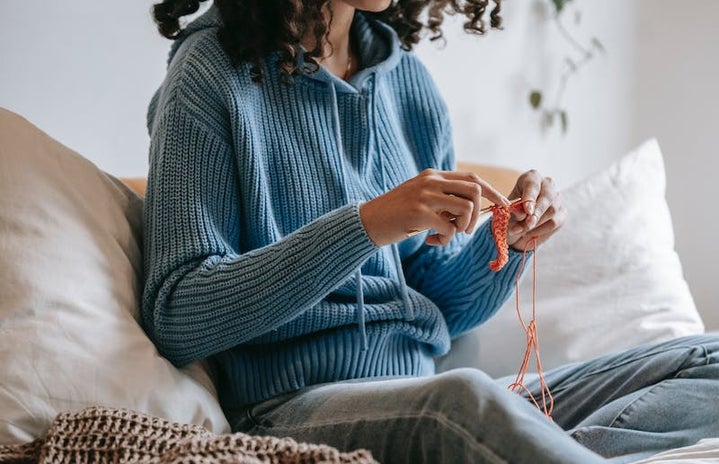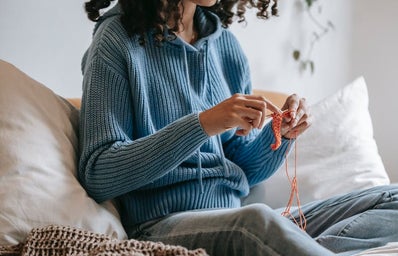In March 2020, the COVID-19 pandemic suddenly forced me to spend a lot more time inside. Like many during quarantine, I tried out many new hobbies. Fortunately, one of them stuck and ended up bringing me lots of comfort through isolating times. If you don’t know much about embroidery, it’s a type of detailed needlework that uses thin threads to create images on fabric. It is commonly confused with crochet, sewing and knitting, however, embroidery is actually very different. If you are anything like I was, the idea of starting embroidery is daunting. What do I buy? How do I learn? I will try my best to answer most of the basic questions you may have.
- What do i need to get started?
-
The most basic supplies that you will need are: :
- A good pair of scissors
- A small pack of embroidery needles
- The fabric or item you want to embroider
My first project was a simple tea towel that used stem stitch and cross stitch. I would recommend choosing a project that’s simple and doesn’t require a bunch of different stitches that you will have to learn.
- Some scrap fabric to practice stitches on
- Embroidery floss- probably lots of it!
If you are following a stencil, keep in mind that the pattern may list specific colors you can use. If you want your project to look exactly like the photo on your stencil, I recommend taking the paper in the package with you to the craft store and matching the numbers on the manual to the specific colors of thread. However, you don’t have to do this! You can use whatever colors you want if you are using embroidery thread of fairly good quality. I hardly follow the exact colors except when working on a large project, and I usually opt for buying thread in bulk from Amazon or a similar site. This is a less expensive option and lets you be a bit creative while still following a stencil.
- Embroidery hoop
I would recommend choosing a size smaller than 8 inches so it’s comfortable to hold.
- Optional, although highly recommended for beginners: iron-on stencils
- If using iron-on stencils: iron and ironing board
- how do you know how many threads to use?
-
This was one of the things that confused me the most when I started. Once you open the embroidery thread, you will notice that one floss has six individual threads. How many threads you use will determine how thick your stitch appears on the fabric. If you are following a stencil, your instruction manual will tell you how many threads to use. When freehanding your embroidery or creating your own stencil, I recommend experimenting with different amounts of threads. Remember, the less you use, the thinner your stitches will appear. As for the length you should cut your floss, I usually cut around 18 inches or less. You want to have enough that you can get a lot of your design done while not having to hold too much.
- What stitches do i need to know? how do i learn them?
-
There are many stitches, but the most basic ones are stem stitch, backstitch, satin stitch, french knots and cross-stitch. By knowing these, you can create the most basic designs. More elaborate designs, such as floral arrangements, require more advanced stitches but don’t be discouraged. I embroidered an entire blanket just out of the stitches mentioned above. For learning the stitches, I highly recommend YouTube. There are some amazing tutorials out there that simplify the process and guide you through what to do.
I think you will find that once you have everything you need, embroidery is actually a pretty straightforward process. I found that the hardest part was figuring out everything I needed to just get started, which hopefully this article clears up.


